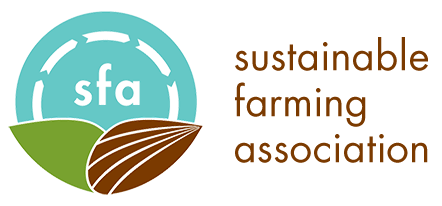Financial Resources for Beginning Vegetable & Fruit Growers
This is meant only as a reference point in your search for ways to begin or increase your farm enterprise, and is not meant to be a complete listing. I have not personally vetted these programs.
– Jerry Ford, SFA Network Coordinator, jerry@sfa-mn.org
I have put together this page based on correspondence with these Extension personnel. They are happy to talk with you about the many aspects of fruit and vegetable growing.
Natalie Hoidal, hoida016@umn.edu, University of Minnesota Extension Educator in Horticulture and Food Systems
Annie Klodd, kloddann@umn.edu, Extension Educator – Fruit and Vegetable Production
Megan L Roberts, meganr@umn.edu, Ed. D., Extension Educator in Agricultural Business Management
Obtaining Farmland
USDA Farm Ownership Loans:
- Connect with your county FSA agent, who can help you work through the details.
- Some of FSA loans are guaranteed farm loans, which means they are backed fully backed by FSA. They are lower risk loans for the lender in case the farm doesn’t work out and typically offer lower interest rates than traditional lending without an FSA partnership could for the farmer.
- Lenders are the FSA’s client when using a guaranteed loan, so with a guaranteed loan the farmer is making an application to the lender not FSA.
- Because the USDA historically underserved women and minorities, a portion of FSA loan funds are specifically dedicated to women and minority applicants.
Minnesota’s Beginning Farmer Loan Program and Aggie Bond Beginning Farmer Loans
- Here’s a comparison chart of the two.
- These come with requirements that you enroll in farm business management education, which is probably a great idea, anyway. FSA and many banks have the same FBM requirement for beginner farmers, not just MDA and RFA.
- These programs are not limited to just farm ownership: buying depreciable assets, etc are allowed.
- Ryan Roles, MDA, is the program contact.
- FSA also has a specific Beginning Farmer Loan program: “with the single exception of the Direct Farm Ownership Down Payment Loan, the Beginning Farmer classification is not related to a type of loan program; it references a specific, targeted funding source.”
Local Banks
- Checking with your local bank can be a good start, especially if you live in an agricultural area.
- Banks that are lending institutions are eligible to participate in many USDA and MDA loan programs, so your local bank may be able to help you navigate which loan program is best for you without being restricted to only federal options.
- Some federal loan options specifically require that you to have been denied for traditional lending, so start with a local agricultural lender if possible (it could be a bank, a credit union, or a farm credit lender).
- Farmers should do their homework before the meeting and if at all possible come prepared with a business plan, accurate balance sheet, a projected cash flow, and three years of income history.
- These are private lenders organized as member-owned cooperatives.
- In Minnesota, Compeer and AgCountry are two Farm Credit System members. Because of their unique structure mandated by Congress, they sometimes are able to provide the best rates and loan benefits for farmers.
- For example, Compeer Financial has some innovative loan programs for new farmers
Realtors
- Realtors can actually play a significant role in helping people find farmland and set up private contracts with land owners for farm transitions, including things like contract for deeds, life estates, or for non-ownership, long term guaranteed leases.
Finding Farmland
- MDA’s Farmlink
- Renewing the Countryside Farmland Hub
- Land Stewardship Projects’s clearinghouse
- Free Online Tool for Building a Draft Lease
Farm Infrastructure and operations:
- For infrastructure such as high tunnels (EQIP program), and to install things like perennial vegetation strips (CSP or AMA program).
- These can be used for equipment, livestock, seed, fertilizer, cash rent, building repairs, family living expenses, and more.
MDA Agricultural Improvement Loan Program
- Meant for buildings, other permanent structures, and occasionally farmers can also meet requirements of the MDA grant programs. Grants of course are always superior to loans because you don’t have to pay them back. The Specialty Crop Block Grant or the Value-Added Grant might be worth browsing over.
- similar to the MDA loans above, but often used for smaller projects.
Banks, credit unions, and farm credit lenders
- These institutions are not just for farm ownership. It is also great to explore these for these types of loans, too.
Business Planning
MDA AGRI Beginning Farmer FBM Scholarship
- This can help to pay for Farm Business Management credits for beginning farmers.
MDA Beginner Farmer Tax Credit
- This gives retiring farmers and other landlords a tax incentive to rent or sell land to a beginner. The beginner then gets a credit to enroll in FBM.
- This site has business plan outlines and examples specific to agriculture and gives you an easy to use template
More Info
- The USDA has a great guide to all of their different loan and grant programs HERE.
- Their New Farmers site is also really good for navigating different programs.
- Specifically, the Access to Land and Capital part of the site is great for differentiating some of the different loan programs and how they apply to various aspects of starting a farm and business.
